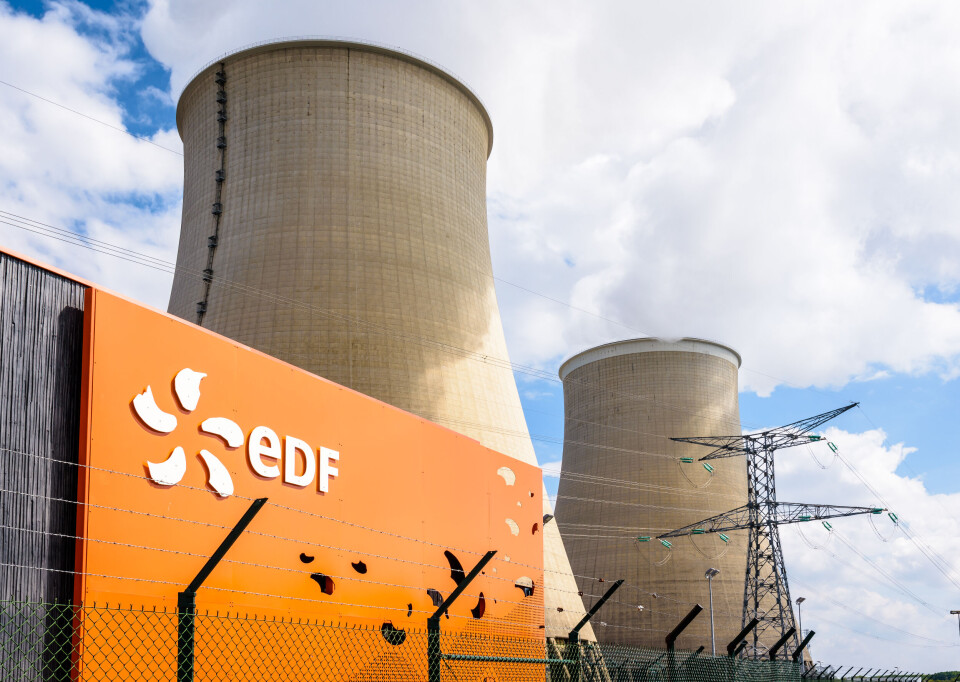-
May will be difficult month for train travel in France, warns minister
Two major train unions are threatening to strike and are ‘not willing to negotiate’, he says
-
Larousse dictionary adds 150 new French words - which ones do you know?
The new words come from trends in sport, nature, leisure, food, medicine, and the rest of the French-speaking world
-
Large increase in Americans buying properties on the Cote d’Azur
President Trump is cited as a major factor, but is not the only reason for the area’s popularity
France returns to being top electricity exporter in Europe
Increased nuclear and hydropower production has pushed it ahead again of its nearest competitor Sweden

France has once again become the leader of electricity exports in Europe after having to import significant amounts of energy in 2022.
The surge had come as a result of the reopening of several nuclear power reactors, said journalist Olivier Poncelet, who reported the figures from analysts EnAppSys.
“At the beginning of the year, EDF [Electricité de France] restarted several reactors that had been shut down for maintenance. Because these plants were shut down in 2022, France had to import energy,” he said.
“This year, however, 73% of the nuclear fleet was operating by February.”
It meant that for the first half of 2023 France exported 17.6 terawatt hours (TWh). The main clients for French energy are the UK and Italy. Between them, they bought enough power for 450,000 homes between January and June.
The difference between 2022 and 2023 is stark. In 2022, electricity production in France fell to its lowest level since 1992 (445.2 TWh in total) due to the closure of many nuclear reactors for repairs, and low levels of production from hydropower due to high temperatures and low rainfall.
This sparked warnings of power cuts and possible electricity shortages (although these were avoided in the end).
Nuclear and hydropower
With its nuclear reactors back online, France pulled ahead of the second-highest producer, Sweden (which exported 14.6 TWh in the same time frame) and third-highest Spain (8.8 TWh). Swedish exports have remained stable, while Spain pulled ahead of the previous third-place country, Germany.
This is partly because Spain had an 'Iberian waiver’, which enabled it to leave the European tariff system and benefit from a lower price for the gas used in electricity production; and because Germany officially phased out nuclear power on April 16 and needed to import more energy.
“Although availability was still 10 to 15% lower than normal [in France], the increase in capacity of 5 to 10 GW compared to last year has helped to tip the French energy balance towards exports,” said Jean-Paul Harreman, director of EnAppSys, in the report.
“Once the French market had access to cheaper production, it started exporting to the UK again.”
Hydro generation also increased, accounting for 10.19% of the electricity produced in France for the week from July 31 to August 6, 2023.
“We have hydraulic reserves that have been pretty good,” said Clément Bouilloux, head of the French market at EnAppSys to Europe 1. “Our dams, and perhaps even more so, what we call the run of the river. For example, simply a turbine driven by river currents.
“I'd say that nuclear power is responsible for two-thirds of the return to normal and that hydraulic power accounts for the remaining third.”
High exports to continue?
It is not yet clear if France’s exports will continue on such a high trajectory throughout the entire year and into winter 2023, however.
“This winter was mild, so we consumed a little less, and there was also some wind, so our wind turbines were able to produce enough,” said Mr Poncelet. “But if this winter is harsher, the trend could be reversed.”
Read also
France looks to small-scale nuclear plants for its future
‘Macron’s nuclear power push is high-risk and high-reward for France’
Film and energy deals made as France-Ireland Brexit boom gathers pace
























